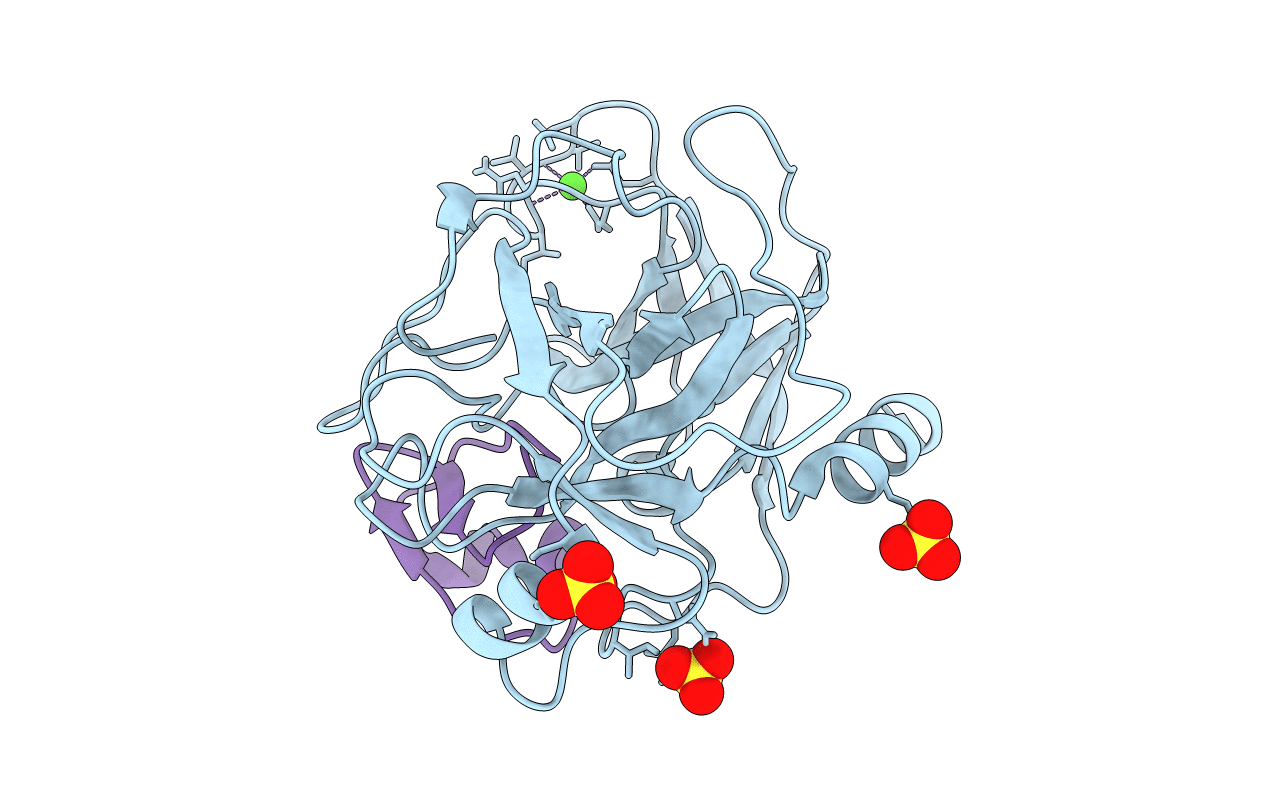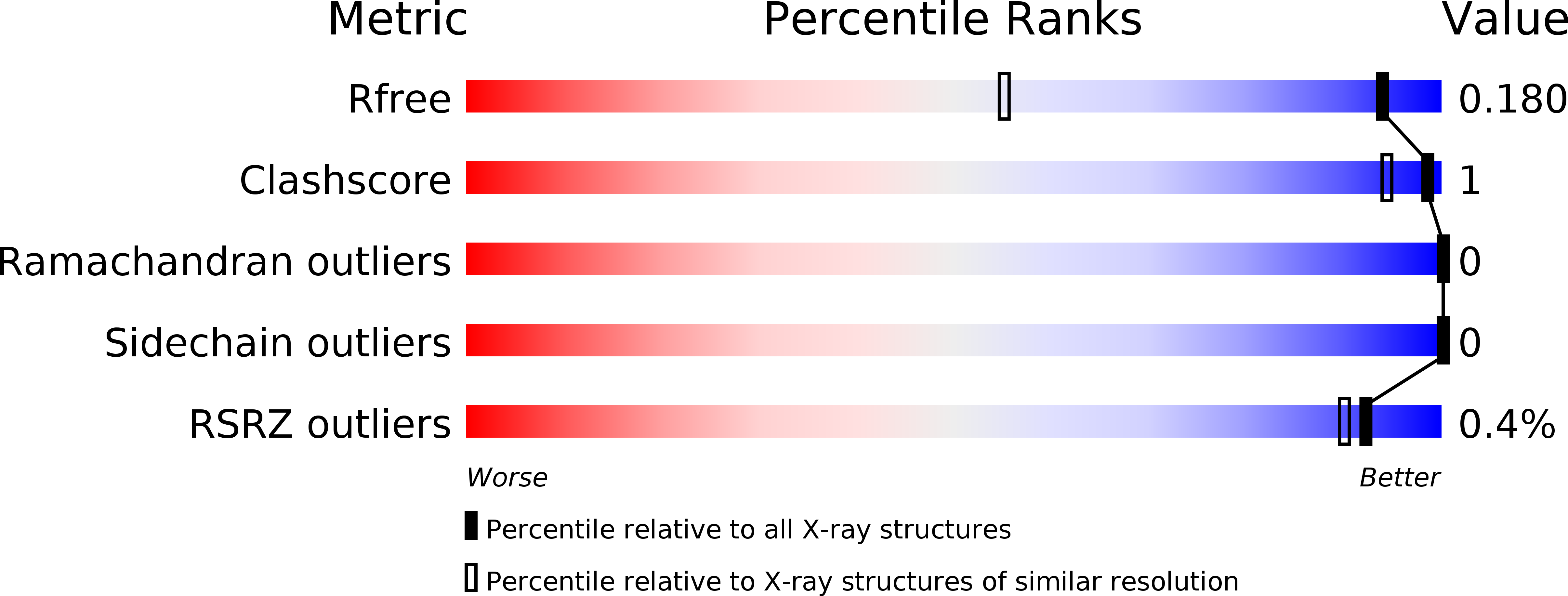
Deposition Date
2018-10-15
Release Date
2020-07-01
Last Version Date
2024-10-16
Entry Detail
PDB ID:
6MRQ
Keywords:
Title:
Structure of ToPI1 inhibitor from Tityus obscurus scorpion venom in complex with trypsin
Biological Source:
Source Organism:
Bos taurus (Taxon ID: 9913)
Tityus (Taxon ID: 6886)
Tityus (Taxon ID: 6886)
Host Organism:
Method Details:
Experimental Method:
Resolution:
1.29 Å
R-Value Free:
0.18
R-Value Work:
0.16
R-Value Observed:
0.16
Space Group:
P 21 21 21


